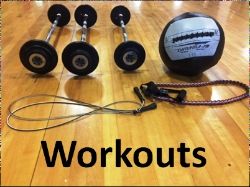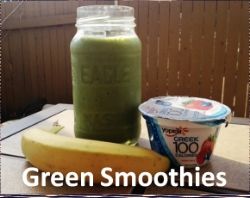Website of the day: Mypyramid.gov can help you find out exactly how much fat you need in your diet to reach your health and fitness goals.
There are so many conflicting reports out about fat that nobody knows what is good or bad anymore. For years, we have all been told that dietary fat is causing the battle of the bulge. But is that really true? Even though fat has a pretty bad reputation, it has certain health benefits we can’t live without (literally). Lets break it down:
The Good:
- They provide essential fatty acids (EFAs) that our bodies cannot produce on their own. These are also known as linoleic acid and alphalinolenic acid.
- Fat also transports the vitamins A,D,E and K throughout our body.
- We all want gorgeous glowing skin, but that is not possible without some fat.
- Fat also plays a key role in promoting proper eyesight and brain development in babies and small children.
- It is well known that excess fat intake is linked to an increase risk for heart disease and stroke risk.
- At 9 calories per gram, fat contains over twice as many calories per gram as carbohydrates and proteins. Therefore, food with a high fat content, also have a high calorie content. Remember, it is too many calories, not too much fat that is responsible for weight gain.
- Diets rich in saturated and trans fat (bad fats) can cause high blood cholesterol which can lead to clogged arteries that block the flow of oxygen-rich blood to the heart and brain.
Now let’s discuss the different types of fat. Fats fall in to three main categories: unsaturated fats, saturated fats, and trans fats. Unsaturated fats are often labeled your “good” fats. These include monounsaturated and polyunsaturated fats and should be the main type of fat consumed in a balanced diet. Monounsaturated fat is found in foods such as olive oil, avocado, nuts and peanut butter. Polyunsaturated fat is found in corn oil, sunflower oil, flaxseed and flaxseed oil, soybeans, tub margarine and seafood. Seafood is a fat champion, because it contains high levels of omega-3 fats called DHA (docosahexanoic acid) and EPA (eicosapentanoic acid). These are unsaturated fats that can lower blood triglycerides, reduce risk of blood clots, and encourage a normal heart beat.
Saturated fats on the other hand, should be limited. They are responsible for clogged arteries, increased risk of heart attack and high cholesterol! Saturated fats are found mainly in fatty meats, full-fat dairy products (cheese, ice cream, and whole milk), highly saturated vegetable fats (coconut oil, palm, palm kernel oil, and cocoa butter), and in many packaged foods (milk chocolate, cookies, crackers, and snack chips). I know this is all pretty depressing, because who doesn’t love ice cream? Your body does not actually need any saturated fat because it can produce enough on its own. With that being said, it is almost impossible to cut out saturated fats completely, so try to keep it less than 7% of your total daily fat.
Lately, there has been a lot of discussion about trans fat and how it is responsible for all of America’s health problems. Although I don’t think one single thing can be responsible for ALL of our problems, it is definitely not helping the situation. Trans fat contributes to clogged arteries, and has been linked to certain cancers, such as breast and colon cancer. According to a study by the Harvard School of Public Health, eliminating trans fat from the American diet could prevent approximately a quarter of a million heart attacks and related deaths a year. That is a huge number! So where are trans fats hiding? There are very small amounts of trans fats in fatty meats and full fat dairy products, but the main source is the end product of hydrogenation. This is where we get the term partially hydrogenated oil. Chemists converted oil into a firmer, tastier and longer lasting product by adding hydrogen atoms to it. Delicious right? Luckily, partially hydrogenated fat (trans fat) is slowly being removed from most packaged food, but is still found in some shortening, fast food, cookies, and microwave popcorn. The best way to avoid Trans fat is to read nutrition labels. However, even when a food is labeled, “trans fat free” it can still contain up to half a gram of Trans fat! Isn’t that lying?
Three easy ways to avoid bad fats:
- Avoid packaged foods whenever possible.
- Eat lean sources of protein, low-fat dairy, whole grains, legumes and fruits and vegetables.
- Use healthy oils such as olive, canola, and sunflower oil, and small amounts of tub margarine for cooking.
Lauren G.
Sources: Fat Facts: Good Fats Vs. Bad Fats WebMD.com, Trans fat Facts: Where are trans fats now WebMD.com
share this on » |



















